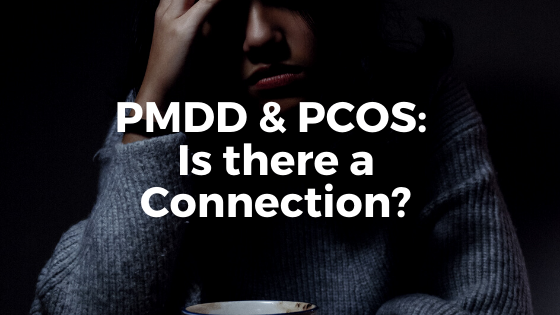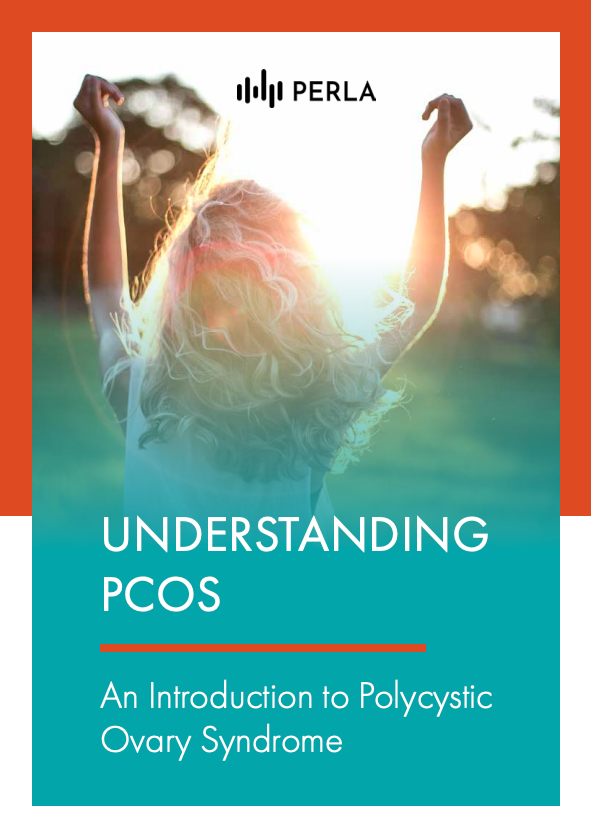Premenstrual dysphoric disorder (PMDD) is a severe form of PMS or premenstrual syndrome. PCOS, on the other hand, is a hormonal disorder that usually causes irregular periods, weight gain, and excessive hair growth. The psychological symptoms of these two disorders often overlap, but are they connected?
Is there a link between PCOS and PMDD?
PCOS and PMDD are not generally associated with each other. While it is possible to be diagnosed with both conditions, having one does not mean you will also develop the other. Patients with PCOS and PMDD may experience anxiety and depression, but there is no connection between the two disorders.
PCOS is a hormonal disorder often characterized by anovulation or failure to ovulate, while PMDD is more common in regularly ovulating women. When ovulation does not occur, PMDD symptoms also disappear.
If you are experiencing severe PMS symptoms a few days to two weeks before your period, accompanied by feelings of intense sadness, irritability, and anger, speak to your medical provider or your PCOS care team.
What is PMDD?
Over 90% of menstruating women experience PMS symptoms, such as bloating, abdominal cramps, headaches, and irritability.1 However, in some women, these symptoms are so severe that they interfere with their daily functioning. These symptoms could lead to a diagnosis of PMDD.
Although the type and extent of symptoms of PMDD vary from person to person, the main symptoms are psychological. PMDD was added to the Diagnostic and Statistical Manual of Mental Disorders (DSM) in 2013 and was categorized as a type of depressive disorder.2
During consultations, women with PMDD often complain of irritability and inability to cope with the usual demands of work or family life.3 The symptoms of PMDD may resemble other medical conditions, such as thyroid disorder, anxiety disorder, or depression. Always consult a medical professional for a diagnosis.
What causes PMDD?
The exact cause of the disorder remains uncertain. It was initially theorized that PMDD is a result of an imbalance in hormones, similar to PCOS, but this was disproven a long time ago.4 There are no significant differences in any specific hormone in women with severe PMS.
Studies have shown that women with PMDD have increased sensitivity to hormonal fluctuations, naturally occurring after ovulation, in the second half of the menstrual cycle, also known as the luteal phase. That’s why PMDD is sometimes called late luteal phase dysphoric disorder (LLPDD).
Simply put, hormonal imbalance is not the culprit behind the disorder. Even if their hormone levels are normal, some women are just more sensitive to changes in reproductive hormones, particularly progesterone and estrogen, during the two weeks before their period starts. This sensitivity can lead to dysregulation in brain chemicals and neurotransmitter systems that control your mood and general well-being.
An important discovery
Researchers at the National Institutes of Health (NIH) have discovered that a gene complex is responsible for PMDD’s abnormal behavior sensitivity to estrogen and progesterone.5 It appears that there’s a disturbance in the expression of the gene ESC/E(Z), which is not present in the cells of healthy controls.
This is the first time that cellular evidence has been established for PMDD. A possible biological cause validates women’s experience with the disorder, as this implies that PMDD is not a behavioral choice.
How is it diagnosed?
There is no definitive test to detect PMDD. The diagnosis is based solely on the patient’s symptoms. Timing is the key characteristic of this condition. Symptoms must be present 1-2 weeks preceding the menstruation and resolve when the period starts. If you are experiencing mood disturbances for longer than two weeks, you may have other underlying conditions. Patients are advised to have a monthly mood chart to help in confirming the diagnosis.
The DSM-5 requires the presence of at least 5 of these main symptoms for a diagnosis to be made:2
- Anger or irritability
- Depressed mood
- Mood swings
- Severe anxiety and tension
- Difficulty in concentration
- Sleep problems (insomnia or sleepiness)
- Appetite changes
- Lack of energy
- Feeling out of control
- Lack of interest in usual activities
- Physical symptoms (bloating, breast tenderness, weight gain, muscle pain)
How is PMDD treated?
Treatments for PMDD usually include lifestyle changes, hormone therapies, antidepressants, natural supplements, and cognitive-behavioral therapy.6 Before starting or taking any treatments, supplements or natural remedies, always consult a doctor. Discuss your symptoms with your provider and PCOS care team. They will provide the best treatment plan for your condition.
Sources:
- Winer SA, Rapkin AJ. Premenstrual disorders: prevalence, etiology, and impact. The Journal of Reproductive Medicine. 2006;51(4 Suppl):339–347. https://www.ncbi.nlm.nih.gov/pubmed/16734317. Accessed August 17, 2020.
- Association AP. Diagnostic and Statistical Manual of Mental Disorders (DSM-5®). American Psychiatric Pub; 2013. Accessed August 17, 2020.
- Payne J. Premenstrual Syndrome. Periods; premenstrual syndrome info. patient.info. https://patient.info/doctor/premenstrual-syndrome-pro. Published April 16, 2015. Accessed August 17, 2020.
- Bäckström T, Bixo M, Strömberg J. GABAA Receptor-Modulating Steroids in Relation to Women’s Behavioral Health. Current Psychiatry Reports. 2015;17(11). doi:10.1007/s11920-015-0627-4
- Dubey N, Hoffman JF, Schuebel K, et al. The ESC/E(Z) complex, an effector of response to ovarian steroids, manifests an intrinsic difference in cells from women with premenstrual dysphoric disorder. Molecular Psychiatry. 2017;22(8):1172-1184. doi:10.1038/mp.2016.229
- Hantsoo L, Epperson CN. Premenstrual Dysphoric Disorder: Epidemiology and Treatment. Curr Psychiatry Rep. 2015;17(11):87. doi:10.1007/s11920-015-0628-3


